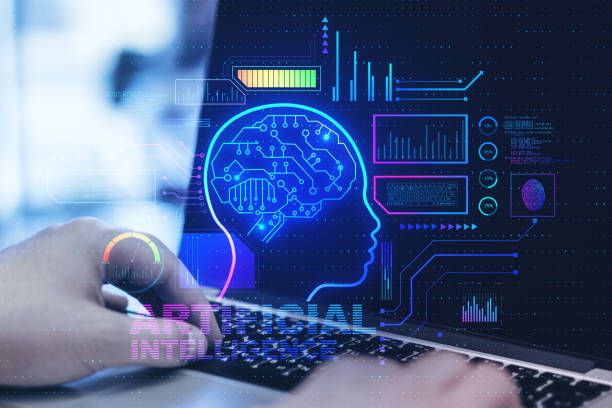What is an Artificial Intelligence Robot and How Does it Work?
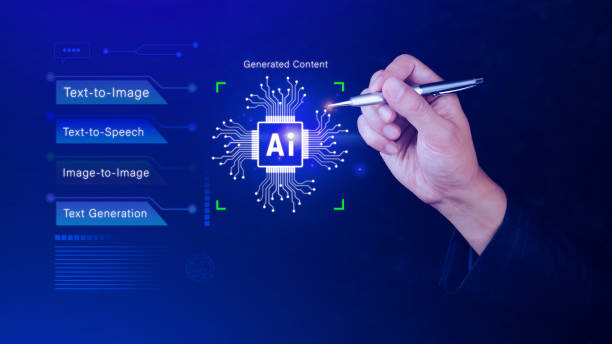
In today’s world, #Artificial_Intelligence (AI) is rapidly advancing, and robots, as one of the most important manifestations of this technology, play a very important role.
But what is an artificial intelligence robot and how does it work? In short, an artificial intelligence robot is a machine that is capable of performing tasks that typically require human intelligence.
These tasks can include learning, reasoning, problem-solving, understanding natural language, and recognizing patterns.
Artificial intelligence robots use complex algorithms and artificial neural networks to process information and make decisions.
These algorithms allow robots to learn from data, improve their experiences, and perform well in various situations.
For example, an artificial intelligence robot designed for autonomous driving can use sensor and camera data to detect obstacles, traffic signs, and other vehicles, and make appropriate driving decisions based on this information.
Machine learning is a fundamental pillar of artificial intelligence robots.
Machine learning allows the artificial intelligence robot to extract patterns from data and improve its performance without direct programming.
Is your online sales not as expected? With Rasaweb, solve the problem of low sales and poor user experience forever!
✅ Increase visitor-to-customer conversion rate
✅ Create a pleasant user experience and increase customer trust
⚡ Get a free consultation now!
Main Components of an Artificial Intelligence Robot
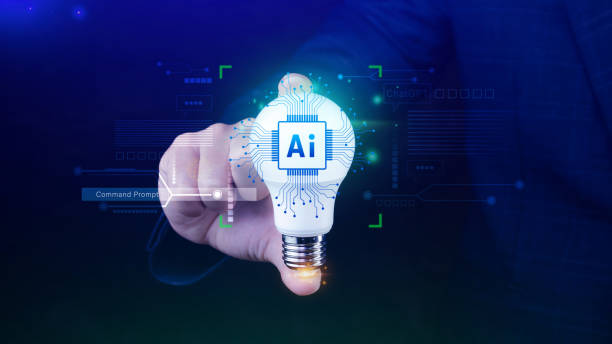
An artificial intelligence robot consists of several main components that, working together, enable the performance of various tasks.
These components include sensors, processors, actuators, and software.
Sensors are used to collect information from the surrounding environment.
This information can include images, sounds, temperature, pressure, and other sensory data.
Processors are responsible for processing the collected information and making decisions.
Processors use artificial intelligence algorithms to analyze data and generate control commands.
Actuators are responsible for executing control commands.
Actuators can include motors, pumps, robotic arms, and other mechanical devices.
Software is the thinking brain of the artificial intelligence robot that coordinates all components and enables the performance of various tasks.
The software includes artificial intelligence algorithms, device drivers, and other application programs.
In general, an artificial intelligence robot is a combination of hardware and software that, working together, enables the performance of complex tasks.
These robots can be used in various industries, including manufacturing, services, medicine, and education, to improve productivity, reduce costs, and increase the quality of life.
Given the increasing advances in the field of artificial intelligence and robotics, it is expected that the artificial intelligence robot will play a much more important role in our lives in the future.
Types of Artificial Intelligence Robots, Applications, and Differences
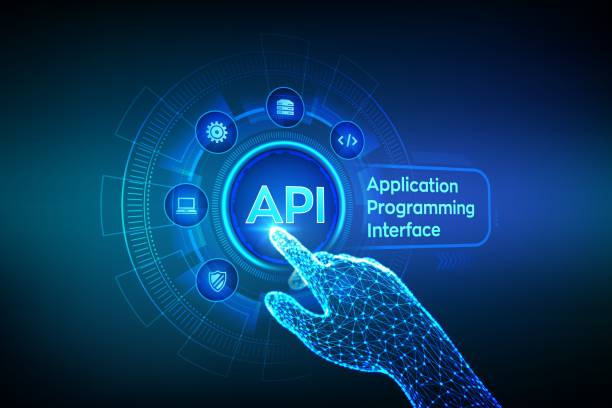
Artificial intelligence robots are designed and manufactured in various types, each suitable for specific applications.
These robots can be categorized based on their appearance, type of movement, level of intelligence, and application.
Industrial robots, service robots, medical robots, military robots, and educational robots are among the most important types of artificial intelligence robots.
Industrial robots are used to perform repetitive and heavy tasks on production lines.
These robots typically have robotic arms that can move parts with high precision and speed, perform welding, painting, and other manufacturing tasks.
Service robots are designed to provide services to humans in various environments.
These robots can include cleaning robots, delivery robots, elderly care robots, and guide robots.
Medical robots are used to perform precise surgeries, assist in patient rehabilitation, deliver medication, and other medical tasks.
Military robots are designed to perform dangerous and difficult tasks on the battlefield.
These robots can include reconnaissance robots, bomb disposal robots, transport robots, and combat robots.
Educational robots are used to teach artificial intelligence and robotics concepts to students.
These robots typically have programmable parts and various sensors that allow users to learn artificial intelligence concepts by designing and building simple robots.
Artificial intelligence robots in each category have different features and capabilities depending on the type of application and level of intelligence.
| Robot Type | Application | Features |
|---|---|---|
| Industrial | Production Lines | Robotic Arms, High Precision |
| Service | Providing Services | Cleaning, Delivery |
| Medical | Surgery, Rehabilitation | High Precision, Safety |
| Military | Reconnaissance, Bomb Disposal | High Resistance, Remote Control Capability |
Advantages and Disadvantages of Using Artificial Intelligence Robots
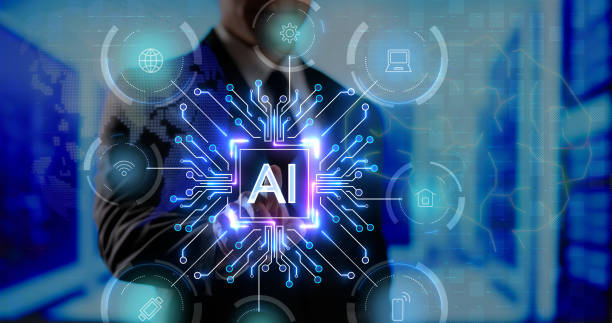
The use of artificial intelligence robots has many advantages, including increased productivity, reduced costs, improved quality, increased safety, and the ability to perform difficult and dangerous tasks.
However, the use of these robots also has disadvantages, including job losses, increased dependence on technology, security and ethical concerns.
One of the most important advantages of using artificial intelligence robots is increased productivity.
These robots can work continuously and without fatigue and perform tasks faster and more accurately than humans.
This can lead to increased production, reduced project completion time, and improved profitability.
Reducing costs is another advantage of using artificial intelligence robots.
These robots can replace human labor and reduce costs related to salaries, insurance, and other employee benefits.
Also, artificial intelligence robots typically require less maintenance than humans and can work in harsh and difficult conditions.
Improving quality is also an important advantage of using artificial intelligence robots.
These robots can perform tasks with greater accuracy and consistency than humans and reduce the likelihood of errors and mistakes.
This can lead to improved product and service quality, increased customer satisfaction, and reduced costs related to repairs and returns.
However, it should be noted that the use of artificial intelligence robots can lead to job losses, as these robots can replace human labor in many tasks.
This can lead to increased unemployment and social inequality.
Therefore, governments and organizations need to have appropriate training and retraining programs for the workforce to be able to adapt to these changes.
Do you dream of a thriving online store but don’t know where to start?
Rasaweb is your comprehensive e-commerce website design solution.
✅ Attractive and user-friendly design
✅ Increased sales and revenue⚡ Get a free consultation
Challenges of Developing and Implementing Artificial Intelligence Robots
![]()
Developing and implementing artificial intelligence robots has numerous challenges that must be overcome to effectively use this technology.
These challenges include technical challenges, economic challenges, social challenges, and ethical challenges.
Technical challenges include developing advanced artificial intelligence algorithms, building accurate and reliable sensors, designing powerful and efficient actuators, and developing complex and coordinated software.
Economic challenges include the high cost of research and development, the high cost of production and maintenance, and the high cost of training and retraining the workforce.
Social challenges include concerns about job losses, increased dependence on technology, and concerns about privacy and security.
Ethical challenges include concerns about accountability, transparency, and control of artificial intelligence robots.
One of the most important technical challenges is developing advanced artificial intelligence algorithms that can perform complex tasks with high accuracy and speed.
These algorithms must be able to learn from large data sets, recognize patterns, and make appropriate decisions.
Another challenge is building accurate and reliable sensors that can collect accurate information from the surrounding environment.
These sensors must be able to perform well in various conditions, including low light, high temperature, and high humidity.
Designing powerful and efficient actuators is also a technical challenge.
These actuators must be able to perform precise and powerful movements and be resistant to wear and corrosion.
Developing complex and coordinated software is also a technical challenge.
This software must be able to coordinate all components of the artificial intelligence robot and enable the performance of various tasks.
Overcoming these challenges requires investment in research and development, collaboration between universities and industry, and training and retraining the workforce.
What Expectations Do We Have for the Future of Artificial Intelligence Robots?
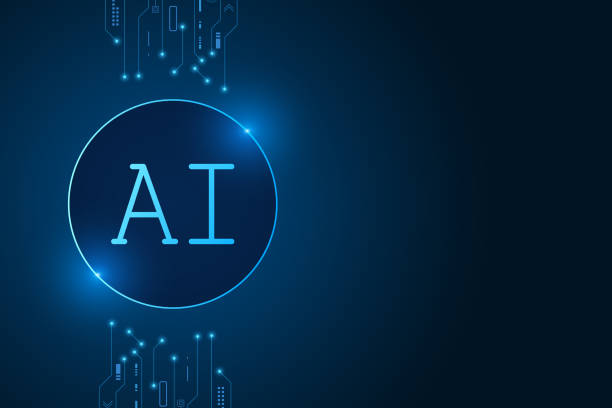
The future of artificial intelligence robots is very bright and full of opportunity.
With increasing advances in the field of artificial intelligence and robotics, it is expected that these robots will play a much more important role in our lives in the future.
These robots can be used in various industries, including manufacturing, services, medicine, education, agriculture, and transportation, to improve productivity, reduce costs, increase the quality of life, and solve global problems.
In the future, it is expected that artificial intelligence robots will be able to perform more complex tasks, interact better with humans, and operate independently in various environments, including homes, workplaces, and cities.
It is expected that artificial intelligence robots will be able to perform more complex medical tasks in the future, including precise surgeries, diagnosing diseases, and providing personalized care.
These robots can use advanced sensors and artificial intelligence algorithms to collect accurate information from the patient’s body and make appropriate treatment decisions based on this information.
In the field of agriculture, it is expected that artificial intelligence robots will be able to perform various tasks, including planting, cultivating, harvesting, and irrigating.
These robots can use advanced sensors and artificial intelligence algorithms to accurately monitor environmental conditions and make appropriate decisions for managing the farm based on this information.
In the field of transportation, it is expected that artificial intelligence robots will be able to safely and efficiently control self-driving cars, drones, and other vehicles.
These robots can use advanced sensors and artificial intelligence algorithms to accurately detect the surrounding environment and make appropriate driving decisions based on this information.
Ethical Issues Surrounding the Use of Artificial Intelligence Robots
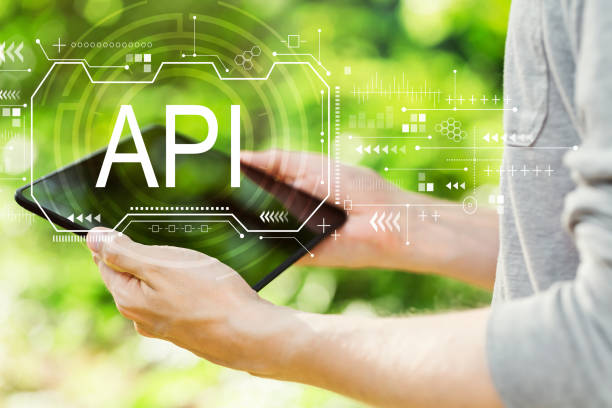
The widespread use of artificial intelligence robots raises important ethical issues that need to be addressed.
These issues include accountability, transparency, privacy, security, and discrimination.
Accountability means who is responsible for the decisions and actions of the artificial intelligence robot? If an artificial intelligence robot makes a mistake and causes damage, who should be held accountable? Transparency means how can the performance of the artificial intelligence robot be explained? Can one understand why an artificial intelligence robot made a particular decision? Privacy means how can personal information collected by artificial intelligence robots be protected? Can artificial intelligence robots collect and use our personal information?
Security means how can artificial intelligence robots be protected from cyber attacks? Can hackers control artificial intelligence robots and use them for malicious purposes? Discrimination means how can discrimination in artificial intelligence robot algorithms be prevented? Can artificial intelligence robots unintentionally discriminate? Solving these ethical issues requires the development of appropriate laws and regulations, the development of ethical standards, and public education and awareness.
Governments, organizations, and companies need to address these ethical issues in cooperation and offer appropriate solutions.
Failure to address these ethical issues can lead to serious problems in the future.
Artificial Intelligence Ethics Studies in this area can be very helpful.
| Ethical Issues | Pros | Cons |
|---|---|---|
| Accountability | Determining responsibility for robot actions | Difficulty in determining responsibility in case of error |
| Transparency | Understanding how the robot works | Complexity in explaining the decision-making process |
| Privacy | Protection of personal information | Collection and use of information without consent |
| Security | Prevention of cyber attacks | Vulnerability to hackers |
| Discrimination | Prevention of discrimination in the algorithm | Probability of the robot acting discriminatorily |
How Do Artificial Intelligence Robots Affect Our Daily Lives?
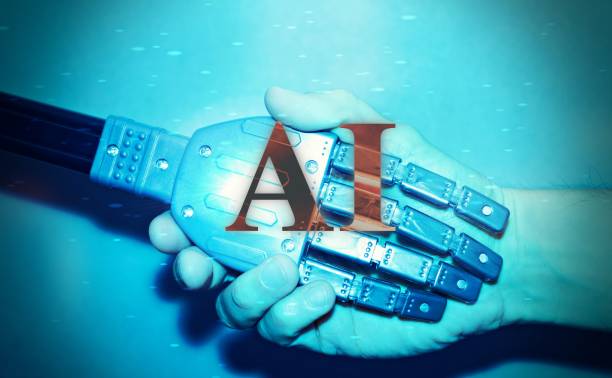
Artificial intelligence robots are increasingly present in our daily lives and have a profound impact on various aspects of our lives.
From homes and workplaces to transportation and entertainment, artificial intelligence robots help us perform tasks faster, easier, and more efficiently.
In homes, artificial intelligence robots can help us perform various tasks, including cleaning, cooking, caring for children and the elderly, and managing energy.
Voice assistants such as Siri and Alexa are common examples of artificial intelligence robots that can help us perform various tasks, including playing music, setting reminders, answering questions, and controlling smart home devices.
In the workplace, artificial intelligence robots can help us perform various tasks, including automating processes, analyzing data, managing customers, and developing new products.
Industrial robots are also used on production lines and can perform repetitive and heavy tasks with high accuracy and speed.
In the field of transportation, artificial intelligence robots can help us with autonomous driving, navigation, and traffic management.
Self-driving cars are advanced examples of artificial intelligence robots that can drive without human intervention.
In the field of entertainment, artificial intelligence robots can help us create new content, provide personalized recommendations, and improve the gaming experience.
Movie and music recommendation systems are common examples of artificial intelligence robots that can suggest content we like based on our tastes.
In general, artificial intelligence robots are changing the shape of our lives, and it is expected that they will play a much more important role in our lives in the future.
Are you annoyed by losing customers due to the old-fashioned appearance or slow speed of your online store? Rasaweb’s expert team solves these problems with professional e-commerce website design!
✅ Increase customer trust and brand credibility
✅ Amazing speed and excellent user experience
Get a free consultation with Rasaweb now ⚡
How Can We Use Artificial Intelligence Robots Safely and Responsibly?

To use artificial intelligence robots safely and responsibly, we need to pay attention to a few key points.
First, we need to increase our awareness of artificial intelligence robots and how they work.
We need to know what capabilities and limitations artificial intelligence robots have and how they can affect our lives.
Secondly, we need to develop appropriate laws and regulations for the use of artificial intelligence robots.
These laws should address ethical issues, privacy, security, and accountability.
Thirdly, we need to create appropriate ethical standards for the development and use of artificial intelligence robots.
These standards should pay attention to human values, justice, and equality.
Fourthly, we need to increase public education and awareness about artificial intelligence robots.
We need to educate people on how to use artificial intelligence robots safely and responsibly and how to protect their rights against artificial intelligence robots.
Fifthly, we need to continuously monitor and evaluate the performance of artificial intelligence robots.
We need to make sure that artificial intelligence robots comply with laws and regulations and ethical standards.
By following these key points, we can use artificial intelligence robots safely and responsibly and benefit from this technology.
Also, we must remember that artificial intelligence robots are tools that can be used for good or bad purposes.
Therefore, we should strive to use these tools to improve human lives and solve global problems.
Resources for Learning More About Artificial Intelligence Robots

If you are interested in learning more about artificial intelligence robots, there are numerous resources available to you.
These resources include books, articles, training courses, websites, blogs, and conferences.
Numerous books have been written on artificial intelligence and robotics that you can read.
These books can help you understand the basic concepts of artificial intelligence and robotics, artificial intelligence algorithms, and applications of artificial intelligence robots.
Numerous scientific articles have been published on artificial intelligence and robotics that you can search for in scientific journals and scientific databases.
These articles can help you learn about the latest advances in the field of artificial intelligence and robotics.
Numerous training courses are offered on artificial intelligence and robotics that you can attend.
These courses can help you learn the practical concepts of artificial intelligence and robotics, develop programming skills, and build artificial intelligence robots.
Numerous websites and blogs exist on artificial intelligence and robotics that you can read.
These websites and blogs can help you learn about artificial intelligence and robotics news and events, educational articles, and practical projects.
Numerous conferences are held on artificial intelligence and robotics that you can attend.
These conferences can help you connect with artificial intelligence and robotics experts, learn about the latest advances, and present your projects.
To get started, you can use online resources like Google AI and OpenAI to gain basic information about artificial intelligence robots and related technologies.
Frequently Asked Questions
| Row | Question | Answer |
|---|---|---|
| 1 | What is an artificial intelligence robot? | An artificial intelligence robot is a machine capable of understanding, reasoning, learning, and solving problems and can perform complex tasks with relative autonomy. |
| 2 | What are the most important applications of artificial intelligence robots? | The main applications include industrial production, customer service (chatbots), medicine and surgery, self-driving transportation, space exploration, and military affairs. |
| 3 | What is the main difference between an artificial intelligence robot and a regular robot? | A regular robot only follows programmed instructions, while an artificial intelligence robot can learn from data, make decisions, and adapt to new environments. |
| 4 | How do artificial intelligence robots learn? | They use machine learning algorithms (such as deep learning, reinforcement learning) and process vast amounts of data, identify patterns, and improve their performance. |
| 5 | Can artificial intelligence robots have emotions? | Currently, artificial intelligence robots do not have real emotions in the human sense. They can mimic or recognize emotions, but they do not have their understanding and experience. |
| 6 | What are the current limitations of artificial intelligence robots? | Limitations include the need for large amounts of data, the inability to understand abstract concepts, the lack of real creativity, ethical issues, and the challenges of generalization in new environments. |
| 7 | What is the role of artificial intelligence in the development of Humanoid robots? | Artificial intelligence helps humanoid robots walk, maintain balance, understand the surrounding environment, interact with humans, and perform complex tasks. |
| 8 | How is the future of artificial intelligence robots predicted? | Artificial intelligence robots are predicted to become more intelligent, more autonomous, and capable of performing more complex tasks in everyday life and industry, and their interaction with humans will increase. |
| 9 | Can artificial intelligence robots replace all human jobs? | It is unlikely that all human jobs will be replaced. Robots take over many repetitive and dangerous tasks, but jobs that require creativity, empathy, and moral judgment will remain. |
| 10 | What ethical and social challenges are raised by the expansion of artificial intelligence robots? | Challenges include issues related to privacy, data security, ethical decision-making by robots, impact on employment, and accountability in case of errors. |
And other advertising agency services Rasa Web in the field of advertising
Smart Direct Marketing: A combination of creativity and technology to manage campaigns by optimizing key pages.
Smart Direct Marketing: An effective tool to attract customers with the help of attractive user interface design.
Smart Direct Marketing: A combination of creativity and technology to increase click-through rate by designing an attractive user interface.
Smart Digital Advertising: A professional solution to increase website visits by focusing on optimizing key pages.
Smart Sales Automation: An effective tool for online growth with the help of custom programming.
And more than hundreds of other services in the field of internet advertising, advertising consulting and organizational solutions
Internet Advertising | Advertising Strategy | Reportage Advertisement
Resources
World of Robotics
,Intelligent Robot
,World of Robots
,Intelligent Robot
? Is your business ready to fly to the peak of success? Rasaweb Advertising Digital Agency, by providing comprehensive and professional services, including the design of an e-commerce website modern and user-friendly, targeted digital marketing strategies and specialized SEO, paves the way for the growth and brilliance of your brand.
📍 Tehran, Mirdamad Street, next to the Central Bank, Kazerun Jonoubi Alley, Ramin Alley No. 6
“`

